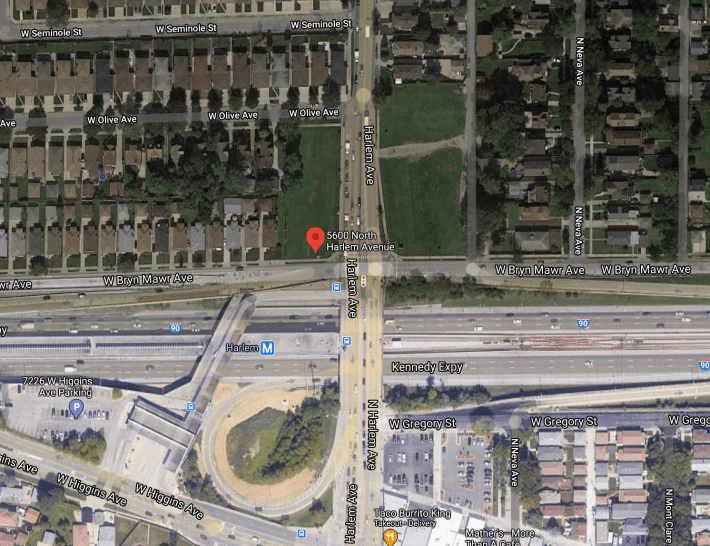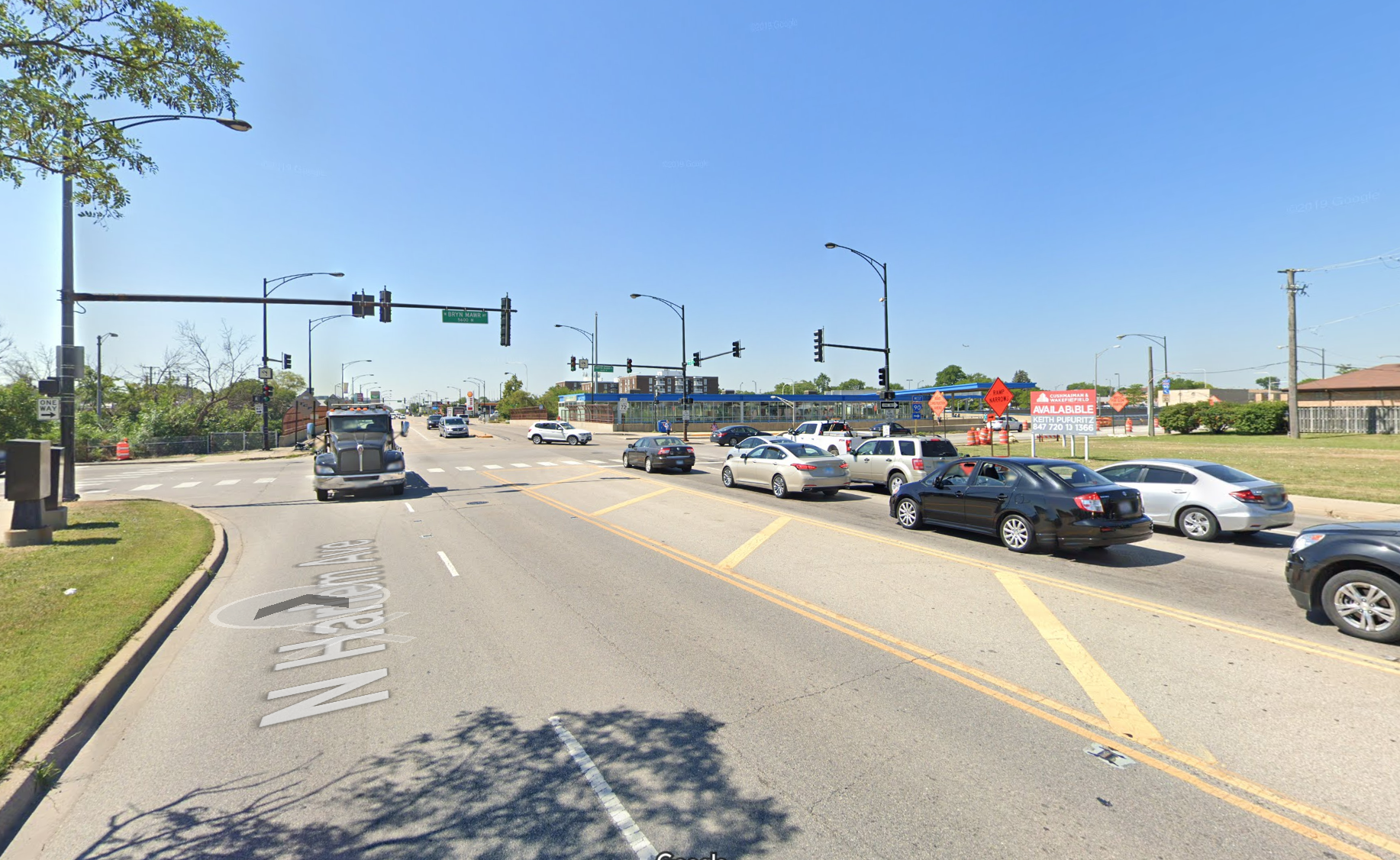The Norwood Park Historical Society recently voiced its opposition to proposed car-centric developments at 5600 and 5611 N Harlem Avenue with a letter to 41st Ward alderman Anthony Napolitano, according to a report from Nadig Newspapers. The land sits directly north of the Harlem Blue Line station, which is located in the median of the Kennedy Expressway, a couple miles east of O'Hare Airport.
The President of Norwood Park History Society, Amara Rozgus, stated that the society feels the proposals for a liquor store, a chain coffee shop, and a car wash are incompatible with the neighborhood’s current character.
Additionally, the group is concerned about traffic congestion, crashes, noise, and pollution, along with a degradation of quality of life for residents. There’s a fear that this development could spur more car-centric developments in the area. Rozgus feels that the community is already well-served by an existing car wash at Northwest Highway and Sayre Avenue and a Starbucks at Harlem and Northwest Highway.
Last month Nadig reported that there has been local opposition to a dense housing development at the sites and that some residents said they would prefer low-rise retail or medical services.
Chicago's transit-oriented development essentially waives on-site parking requirements for developments within a quarter mile of transit stations, or a half-mile on designated Pedestrian Streets. Moreover, on P-Streets, car-centric developments like car washes, auto repair shops, strip malls, and big box stores are banned because their driveways and cross-sidewalk traffic make walking more dangerous and less pleasant.

Unfortunately, the TOD ordinance doesn't actively disallow, or even discourage car-centric developments so close to rapid transit stops unless they're on P-Streets, which is not the case with Harlem. It's also a missed opportunity that more on-site affordable units aren't required in new housing developments as part of the city's Affordable Requirements Ordinance. In addition, there has been heavy resistance to new affordable housing from many residents in majority-white Far Northwest Side neighborhoods, who've lobbied their aldermen to turn down the necessary zoning changes for inclusive development.
In order to get more affordable housing units built, in locations with good transit access to work and education opportunities, in diverse parts of town, not just lower-income areas, which perpetuates segregation and concentrated poverty, we need to overhaul the TOD ordinance with a new focus on equity, a process that the city has started with the recent release of its equitable TOD plan.
But we also need to break the aldermanic stranglehold on zoning decisions, which gives them an outsized influence over whether or not developments get approved. Getting rid of Chicago's de-facto policy of aldermanic prerogative, the power of aldermen to veto projects within their wards, is something Mayor Lori Lightfoot said she was doing when she signed an executive order on her first day in office. But in reality rooting out aldermanic privilege has proved to be easier said than done.
Additionally, it’s unfortunate that the city does not evaluate developments in terms of the potential for increasing congestion, pollution, and crashes or, conversely, the potential to encourage more walking, biking, and transit trips. Harlem is a five-lane street near the station, and the immediate area is already way too car-centric.
I share the Norwood Park Historical Society’s concerns that adding a car wash and a drive-through coffee shop would only make the area more dangerous and less healthy and pleasant for walking and biking. In spite of the local opposition to dense housing, adding a dense housing development (which could also include neighbors' desired medical or retail development) would leverage the asset of the Harlem station, boosting CTA ridership and increasing the neighborhood's vitality by adding new residents.





